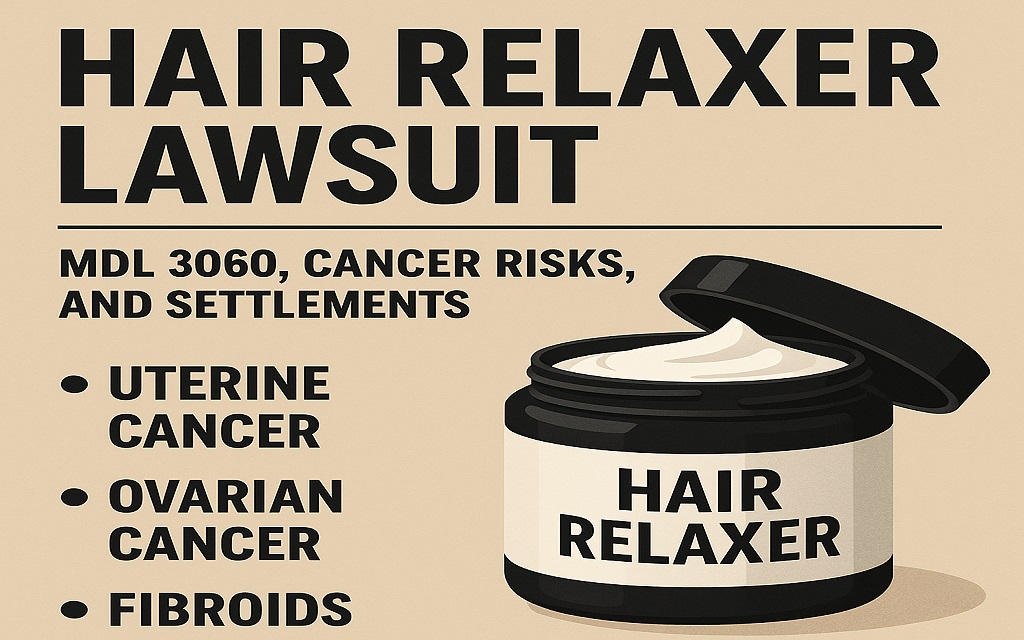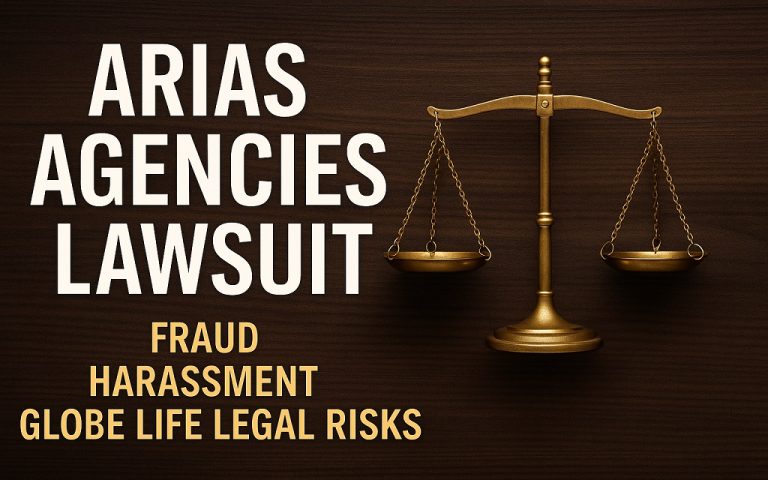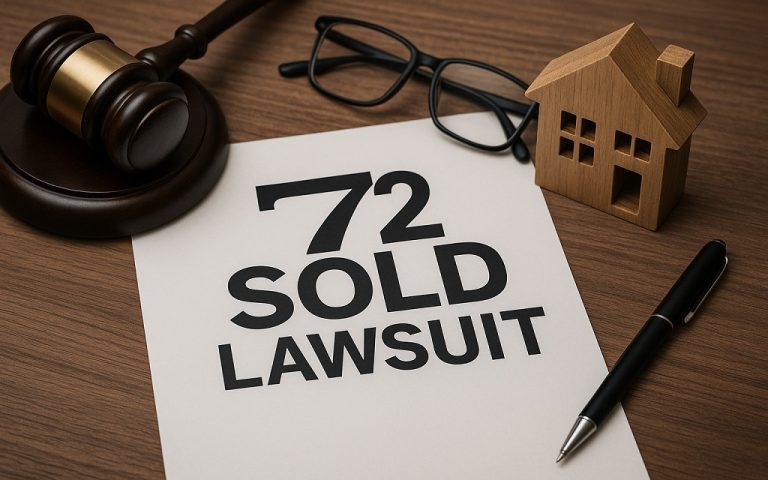Hair Relaxer Lawsuit: What is It?
The plaintiffs allege that businesses failed to adequately warn customers about the cancer risks associated with hair relaxers that contain endocrine-disrupting chemicals (EDCs). Lawsuits cite severe conditions, including:
- Uterine cancer (endometrial carcinoma)
- Ovarian cancer
- Uterine fibroids (leiomyomata)
- Endometriosis
- Hysterectomy
Other issues include reproductive toxicity and breast cancer
Due to a combination of exposure and racial beauty standards, Black women, who used these products disproportionately and often starting in youth, are primarily named in the claims, even though anybody might submit a claim.
What Is MDL 3060, and When Will Trials Begin?
MDL 3060 was formally established in February 2023 to consolidate over 10,000 cases in a single court for efficient handling. About 10,317 lawsuits were still outstanding as of early June 2025.
Timeline & Deadlines for Bellwether:
- Eligibility filing deadline: Plaintiff Fact Sheets must be submitted by February 28, 2025, for short-form complaints submitted before February 1, 2024.
- Selection of the case pool: Both parties submit 20 suitable instances by April 30, 2025. After striking four cases each, a 32-case pool is finalized by May 9, 2025.
- Discovery phases:
Fact discovery by February 16, 2026
General causation expert reports by March 2, 2026, rebuttals by October 31, 2025
Bellwether trials: They are expected to begin in late 2026 or early 2027. Some courts have mentioned dates as early as November 3, 2025, and February 2, 2026.
These early outcomes will significantly influence settlement strategies and future case valuations.
Which Hair Relaxer Brands Are Being Sued?
Defendants include major manufacturers and recognizable brands:
- L’Oréal USA Inc. – SoftSheen-Carson, Dark & Lovely, Optimum Salon
- Revlon (covering Crème of Nature, All Ways Natural Relaxer)
- Beauty Bell / House of Cheatham’s – Africa’s Best
- Namaste Laboratories – ORS Olive Oil
- Strength of Nature, Luster Products (Smooth Touch, Pink), Avalon, Bantu, Mizani, AFAM, and others.
However, L’Oréal and Revlon have resisted but lost key dismissal motions; Revlon’s bankruptcy may not necessarily shield it—insurance may cover these claims.
What Cancers and Diseases Are Linked to Hair Relaxers?
Uterine Cancer
The NIH/NIEHS Sister Study followed 33,497 women for nearly 11 years. It found that women who used relaxers four or more times per year experienced more than double the risk of uterine cancer, rising from 1.64% to 4.05% by age 70.
Ovarian Cancer
A related analysis reported a ~50% increased risk of ovarian cancer among frequent relaxer users.
Uterine Fibroids
The Black Women’s Health Study (1997–2019) of 44,798 Black women noted a 1.6×1.7× increase in uterine cancer risk for moderate to heavy relaxer use, especially postmenopause. Earlier epidemiological work (AJE 2012) also tied long-term use to fibroid risk.
Hysterectomy, Endometriosis, and Associated Disorders
Exposure to chemical hair relaxers has been associated in several cohort studies with a higher incidence of reproductive diseases, such as endometriosis and the necessity for a surgical hysterectomy.
Black women are disproportionately affected by these health hazards since they frequently start taking relaxers sooner and more regularly.
Which Dangerous Chemicals Can Be Found in Hair Relaxers?
Endocrine-disrupting chemicals (EDCs), which have been connected to tumours and reproductive issues, are frequently found in hair relaxers. Common EDCs include:
- Phthalates, such as DEHP: interfere with the control of hormones
- Parabens: Linked to malignancies of the reproductive system
- Bisphenol A (BPA): Modifies hormonal balance by mimicking oestrogen.
- Formaldehyde releasers: connected to respiratory problems and cancer
- Diethanolamine (DEA): Heavy metals, and other EDCs: Contribute to toxic exposure
Customers are often unaware of the potential hazards associated with these substances, as they are not typically listed on product labels.
Who Can Bring a Lawsuit Against a Hair Relaxer?
To qualify, plaintiffs usually need to demonstrate:
- Regular use of chemical hair relaxants (such as ORS Olive Oil, Dark & Lovely, Smooth Touch, SoftSheen-Carson, and Crème of Nature), usually four or more times a year
- A medical diagnosis of fibroids, endometriosis, ovarian cancer, endometrial cancer, uterine cancer, or a hysterectomy
- Participation in the MDL process on time, including submitting a Plaintiff Fact Sheet by February 28, 2025, and filing a lawsuit by February 2024
The statute of limitations frequently begins at the time of diagnosis, rather than the time of product usage, due to the “discovery rule” that many states adhere to.
Must Read: OGX Lawsuit: What You Need to Know About Hair Loss Claims
How Much Are Hair Relaxer Settlements Worth?
Although no verdicts have been issued, projections based on mass tort benchmarks suggest:
| Condition | Expected Compensation Range |
|---|---|
| Uterine Cancer | $300K–$1.75M |
| Ovarian Cancer | $400K–$750K |
| Endometrial Cancer | $350K–$1M |
| Uterine Fibroids | $150K–$500K |
| Hysterectomy (non-cancer) | $150K–$300K |
Verdicts may be higher:
If bellwether trials result in plaintiff victories, verdicts could exceed $10 million for the most severe cases.
How Are Settlements Calculated?
MDL cases typically use a point-based settlement matrix, which considers:
- Diagnosis severity & stage
- Age at diagnosis
- Duration/frequency of relaxer use
- Effects of surgeries (such as oophorectomy and hysterectomy)
- On quality of life, discomfort, and fertility
This permits customised awards while standardising compensation.
Which Defence Techniques Will Industries Use?
It is anticipated that defendants will contest several vital elements of the allegations, such as:
- Causation: Claiming that lifestyle choices, heredity, or weight may cause some problems.
- Transparency of ingredients: Making the case that there is no concrete connection between specific product formulations and the stated health benefits.
- Alternative exposures: The claimants may have been exposed to endocrine-disrupting chemicals (EDCs) through other items, it is noted.
Still, plaintiffs rely heavily on Sister Study findings, multiple epidemiological studies, and SCOTUS precedents regarding acceptable causation.
Why Are Black Women Most Affected?
- Higher usage rates: ~89% of Black women have tried relaxers; many start in their youth
- Higher cumulative exposure is linked to earlier and longer usage.
- Uterine fibroids, endometrial cancer, and several ovarian malignancies have higher baseline risks due to preexisting health inequities.
- Usage trends have been influenced by societal and cultural standards of attractiveness, including family customs and targeted advertising.
However, this Hair Relaxer lawsuit highlights broader issues of environmental racism and the ongoing struggle for health justice.
Is This a Class Action or Individual Lawsuit?
This is a multidistrict litigation, not a traditional class action. Each plaintiff’s case is unique, but pretrial proceedings are coordinated to reduce duplication. Some overlapping reimbursement and medical-monitoring class claims also proceed in parallel as part of multidistrict litigation (MDLs).
What Happens Next in MDL 3060?
Timeline Recap:
- 2025: Complete fact discovery; select bellwether cases (10–12)
- Late 2026 – Early 2027: Begin first jury trials
- 2026–2027: Mediation under Special Master Ellen Reisman; settlement proposals ramp up
Significant bellwether verdicts—huge ones—will create intense settlement pressure.
FAQs
Can I still file if I stopped using relaxers years ago?
Yes—the “discovery rule” triggers the statute of limitations at the time of diagnosis, not the last use.
Does occasional use qualify?
Plaintiffs who use relaxers fewer than four times a year have weaker claims, as studies focus on frequent usage.
Is there a deadline to file?
Yes—statute of limitations vary by state, often 2–3 years from diagnosis. Court deadlines require early paperwork to qualify as bellwethers.
When will settlements start?
Following bellwether verdicts, likely in late 2026 or early 2027, settlement negotiations are expected to accelerate.
How do I join the MDL?
You’ll need:
- A consultation with an MDL or mass-tort attorney
- Medical documentation
- Evidence of relaxer use ≥ 4 times/year
- Filing before state and MDL deadlines
Conclusion
In short, at the nexus of racial fairness, beauty culture, and health, the hair relaxer lawsuit is a historic dispute. It may turn out to be one of the biggest consumer health mass torts in recent memory due to growing scientific evidence and extensive litigation.
However, if you took chemical relaxers and developed endometriosis, fibroids, ovarian or uterine cancer, or had a hysterectomy, you should act right away. Before crucial dates pass, collect your supporting paperwork, consult an MDL attorney, and submit.
Disclaimer: This article provides a general overview of the Hair Relaxer Lawsuit, based on publicly available information, and is intended for informational purposes only. It does not constitute legal advice.




